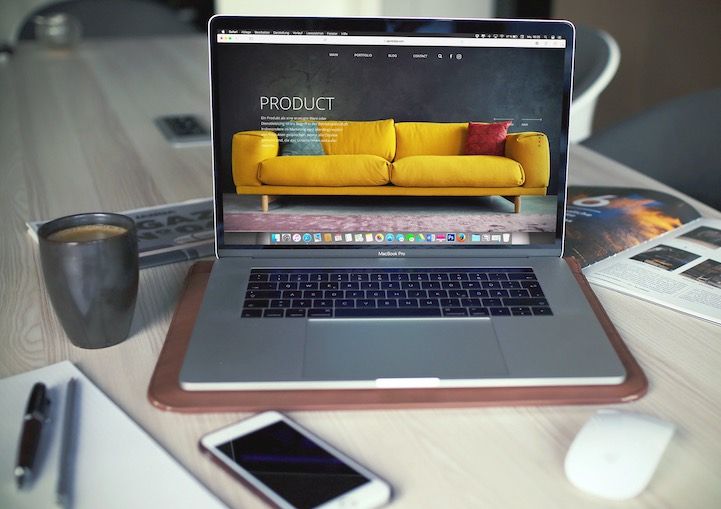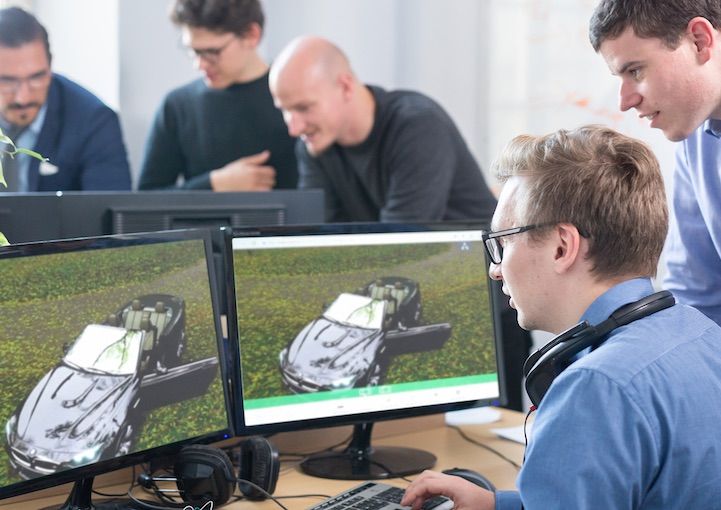INSTANT ON NOW AVAILABLE - Experience Time to first frame as quick as 2 SECONDS
How to Build the Ultimate Digital Marketing Campaign for Your 3D Configurator

Photo-realistic 3D configurators can transform how brands are selling and marketing their products on the web. Giving customers the opportunity to build a product and visualize how it would look in the real world in real-time provides an interactive, personalized experience that increases conversion rates, improves brand status, and reduces customer acquisition costs.
It's an exciting technology that an increasing number of companies are embracing. Car companies are creating real-time 3D configurators, like Chevrolet's wildly popular Corvette Visualizer. And furniture companies like Ikea are offering augmented reality solutions that let people see what entire rooms would look like with their new furniture.
5 ways to effectively market your real-time 3D configurator
A real-time 3D configurator can help you significantly improve customer conversion rates and generate more qualified leads, but adding the resources to market it right and effectively target the right buyers is going to maximize your return on investment.
1. Showcase the advanced personalization of the configurator
An interactive 3D configurator does more than recreate a physical showroom — it improves upon it. It offers an immersive, hyper-personal experience that goes beyond paint schemes or features. If you’re designing a car, for instance, a photo-realistic 3D configurator can show you what it will look like loaded with as many groceries or suitcases it can hold. You can also see how it will look with your bike rack (and 3D bike) attached.
Of course, the average consumer won’t know all the configuration capabilities that can be loaded with powerful game engines. You need to make sure you showcase what your 3D configurator can do that goes beyond the traditional 2D web experience — and even beyond an in-person visit. Not only can you open the trunk of a car for example, and look inside the vehicle, but you can also zoom in to customize even the smallest of details, change the surrounding environment, or even time of day.
2. Use a PR agency to get media exposure before and after launch
Modern 3D configurators are being built using the same powerful 3D rendering technologies that are used to design and develop the latest video games. Unity and Epic Games' Unreal Engine are real-time 3D rendering tools that deliver interactive, photo-realistic 3D experiences. Don’t hesitate to promote your configurator like it's the next hot new game. Get people excited for your launch — promote not only how advanced the technology and digital experience is, but also how immersive it will be for customers.
Read Next: Understanding cloud usage costs when streaming real-time 3D applications
And don’t let that excitement drop once you’ve launched. Unique configurations dreamed up by your users, interesting data you’ve collected on most popular accessories and configurations, as well as interesting demographic insights can all be turned into stories that can be pitched to media outlets or published to your own blog and social media pages to keep interest high and customers tuned in.
3. Drive traffic through your most effective marketing channels
Don’t leave all the work to organic traffic. Invest in paid channels, like pay-per-click ads, social media, and interactive display ads, to promote your photo-realistic 3D configurator.
A 3D configurator is a much more impressive marketing tool than a traditional static landing page or photo gallery, and it will result in a significantly higher ROI for your paid ads, especially if those ads tease the larger, more immersive experience up ahead. You just need to lead users to it with a powerful sneak-peak of the configurator, and/or stories featuring real customers, on your most effective marketing channels.
4. Make your ads as impressive as your configurator
Your ads should convey the excitement of the tech you’re promoting. Emphasize the high-quality photo-realism in your ads, and make them interactive when possible.
Provide a sneak peek of what customers will find on your site. High-quality video ads showcasing the ultra-realistic and configurable product model from different angles is one approach.
But through the latest HTML 5 technology, you can now take things a step further. Consider using rich media and interactive display elements to showcase standout product configurations created by real users in real time. And even run polls in the ads to enable your audience to vote on their favorite user-generated creations.
5. Optimize your configurator for social media
This might seem like a small thing, but it can make a big difference in the success of your interactive 3D configurator. Make it easy for users to share their creations with family and friends on social media platforms. Having someone you know share or recommend a product is the most powerful kind of marketing. And impressive photo-realistic 3D images or digital brochures will get their followers excited about your product as well.
Related Read: 7 considerations when streaming your interactive 3D product configurator
One brand that has taken advantage of social media sharing is L'Oréal with its Style My Hair app. Not only does it use AR to give users a sense of how a new hair color would look on them, but it also lets them share looks and get feedback from friends in a variety of ways.
Once someone starts using your photo-realistic 3D configurator, the likelihood that he or she ultimately makes a purchase, or at least schedules an in-person showing, goes up significantly. These tools can also give you valuable insight into what consumers actually want, leading to higher average lifetime customer values, higher purchase value, and lower customer acquisition costs.
Effective digital marketing is such an important piece of the puzzle. Make sure you build a robust, effective marketing campaign around your real-time photorealistic 3D configurator before its launch.
Awareness is just half the battle
Ultimately, it's important to give your customers the best online configurator and e-commerce experience possible. Users will lose interest quickly if they're constantly waiting for models to load or if the 3D application is glitchy or lags. PureWeb provides seamless 3D streaming solutions through the cloud for interactive photo-realistic renderings made available on any device, any time, anywhere.
The average cost of PureWeb's interactive 3D streaming service is approximately 10-40 cents per user engagement (approximately 5 minutes) with an online configurator. Compared to what most brands are already spending on digital advertising, including pay per click social and Google search ads, sending customers to basic landing pages, the ROI speaks for itself.
To learn more about PureWeb, request a demo to see how our cloud streaming solution can work with your company's photo-realistic 3D configurator developed with Unreal or Unity.


